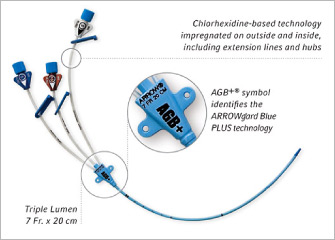
Treatment to attempt recovery of lost function is called stroke rehabilitation, and ideally takes place in a stroke unit however, these are not available in much of the world. Some hemorrhagic strokes benefit from surgery. An ischemic stroke, if detected within three to four-and-a-half hours, may be treatable with a medication that can break down the clot. A stroke or TIA often requires emergency care. Aspirin or statins may be recommended by physicians for prevention. Prevention includes decreasing risk factors, surgery to open up the arteries to the brain in those with problematic carotid narrowing, and warfarin in people with atrial fibrillation. Low blood sugar may cause similar symptoms. Other tests such as an electrocardiogram (ECG) and blood tests are done to determine risk factors and rule out other possible causes. A CT scan can rule out bleeding, but may not necessarily rule out ischemia, which early on typically does not show up on a CT scan. Diagnosis is typically based on a physical exam and supported by medical imaging such as a CT scan or MRI scan. Bleeding may occur due to a ruptured brain aneurysm. A hemorrhagic stroke is caused by either bleeding directly into the brain or into the space between the brain's membranes. An ischemic stroke is typically caused by blockage of a blood vessel, though there are also less common causes. Other risk factors include high blood cholesterol, tobacco smoking, obesity, diabetes mellitus, a previous TIA, end-stage kidney disease, and atrial fibrillation. The biggest risk factor for stroke is high blood pressure. Long-term complications may include pneumonia and loss of bladder control. The symptoms of a stroke can be permanent. A hemorrhagic stroke may also be associated with a severe headache. If symptoms last less than one or two hours, the stroke is a transient ischemic attack (TIA), also called a mini-stroke. Signs and symptoms often appear soon after the stroke has occurred. Signs and symptoms of a stroke may include an inability to move or feel on one side of the body, problems understanding or speaking, dizziness, or loss of vision to one side. Both cause parts of the brain to stop functioning properly.

There are two main types of stroke: ischemic, due to lack of blood flow, and hemorrhagic, due to bleeding. Ischemic (blockage) and hemorrhagic (bleeding) Īge, High blood pressure, tobacco smoking, obesity, high blood cholesterol, diabetes mellitus, previous TIA, end-stage kidney disease, atrial fibrillation īased on symptoms with medical imaging typically used to rule out bleeding Ī stroke is a medical condition in which poor blood flow to the brain causes cell death. Inability to move or feel on one side of the body, problems understanding or speaking, dizziness, loss of vision to one side Changes on a CT may not be visible early on. x 2-1/2" (6.Cerebrovascular accident (CVA), cerebrovascular insult (CVI), brain attackĬT scan of the brain showing a prior right-sided ischemic stroke from blockage of an artery. x 1" (2.54 cm) and 3 mL Luer-Lock Syringe x 1-1/2" (3.81 cm) and 5 mL Luer-Slip Syringe x 26-3/4" (68 cm) (Straight Soft Tip on One End - "J" Tip on Other) with Arrow Advancer™Ĭatheter: 18 Ga. x 8" (20 cm) Radiopaque Polyurethane with Blue FlexTip®, ARROWg+ard® Antimicrobial Surface Treatment 1, Extension Line Clamps, Injection Site Caps Arrow-Howes™ Large-Bore Multi-Lumen Central Venous Catheterization Kit with Blue FlexTip® ARROWg+ard Blue® Catheter for High Volume Infusions


 0 kommentar(er)
0 kommentar(er)
